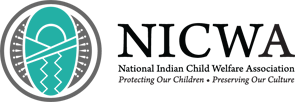Across the country, important conversations regarding systems change are taking place. There are many approaches and many different names for these child welfare system-change conversations. At NICWA, we call this systems-change work redesigning child welfare. As these conversations gain momentum around the country, NICWA is working to ensure that tribal concerns, which do not always fit neatly into any of the current approaches, are part of the conversation.
Over the past year, NICWA provided a forum for tribes and Indian Country advocates through national and regional listening sessions focused on redesigning child welfare services in the United States. These sessions inform our work regarding what policies, tools, and resources are needed, and they steer our advocacy to ensure that broader, national child welfare redesign efforts are inclusive of American Indian and Alaska Native perspectives and solutions.
As part of our systems change work, we developed four briefing papers addressing different aspects of child welfare redesign. These papers are intended for advocates, policymakers, and mainstream organizations, as well as tribes and urban Indian organizations, to assist in providing accurate and reliable information that supports effective participation and advocacy in federal, state, or tribal child welfare redesign efforts.
- What is Child Welfare Redesign? A Summary of Current Perspectives and Approaches
- Why American Indian and Alaska Native Children and Families Need Child Welfare Redesign
- Child Welfare Redesign Approaches and Experiences within Indian Country
- Engaging Tribal Nations and Urban Indian Communities in Child Welfare Redesign
To learn about the findings and conclusions across all regional and national listening sessions, read the summary here: NICWA Child Welfare Redesign Listening Sessions Summary.
Take Action
Read: What is Child Welfare Redesign? A Summary of Current Perspectives and Approaches
Read: Why American Indian and Alaska Native Children and Families Need Child Welfare Redesign
Read: Child Welfare Redesign Approaches and Experiences within Indian Country
Read: Engaging Tribal Nations and Urban Indian Communities in Child Welfare Redesign
Read: NICWA Child Welfare Redesign Listening Session Summary of All Findings
